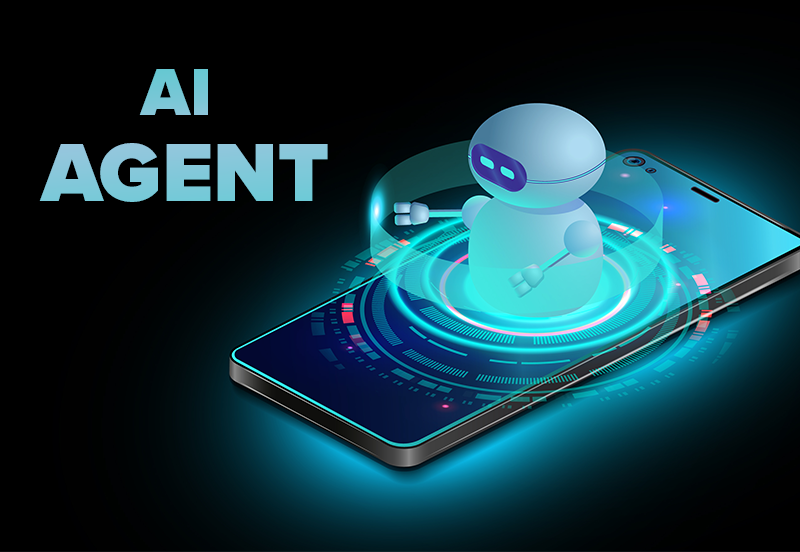
May 20, 2025
How to Build AI Agents for Beginners: A Step-by-Step Guide
How to Build AI Agents for Beginners: A Step-by-Step Guide
Ever wondered how AI chatbots like ChatGPT can have human-like conversations? Or how virtual assistants "understand" our queries? It ultimately boils down to AI agents, smart algorithms that perceive, evaluate, and act on input data.
Beginners may develop their own AI agents without a PhD in AI. From basic rule-based bots to AI-powered agents that learn and grow, this guide covers it all. You will have a conversational, decision-making AI agent by the end. Let's read on!
Understand AI Workers
Let's define AI agents before coding.
Basic AI agents are programs that make decisions depending on their environment. Some are basic and obey rules, while others adapt using machine learning.
Basic rule-based agents will say, Hello!, when you write, Hi, in a chatbot. Advanced AI assistants that learn from past interactions are better learning agents.
After a basic description of AI agents, let's make one!
Setting Up Your Development Environment
We must set up everything before coding. Not to worry, it is simple!
Install Python (from python.org). Install required libraries next. Enter this into your terminal:
pip install openai langchain transformers gymThere you have it! Start with our first AI agent.
Step 1: Building a Simple Rule-Based AI Agent
Simple if-else rules make AI agent development easier. Consider it like educating a child to respond to particular questions.
A simple chatbot that identifies and reacts to a few phrases:
def simple_chatbot(user_input):
responses = {
"hello": "Hi there! How can I help you?",
"bye": "Goodbye! Have a great day.",
"how are you": "I'm just a bot, but I'm doing fine!"
}
return responses.get(user_input.lower(), "I don't understand that.")
while True:
user_input = input("You: ")
if user_input.lower() == "exit":
break
print("Bot:", simple_chatbot(user_input))This script makes your AI agent follow rules. Though enjoyable, this is limited. How can we teach our agent to understand phrases other than precise matches? Here comes machine learning!
Step 2: Creating an AI Agent with Machine Learning
Let's smarten our AI agent. Natural Language Processing (NLP) will let our agent understand multiple ways to ask the same question instead of strict rules.
SpaCy, an elegant NLP library, will help for this. First, install it.
pip install spacy
python -m spacy download en_core_web_sm
Now, let's write some code!
import spacy
nlp = spacy.load("en_core_web_sm")
def ai_response(text):
doc = nlp(text)
if "weather" in text:
return "I can't predict the weather, but you can check a weather site!"
elif "name" in text:
return "I'm an AI assistant!"
else:
return "I'm still learning!"
while True:
user_input = input("You: ")
if user_input.lower() == "exit":
break
print("Bot:", ai_response(user_input))Now, our chatbot can interpret sentences in multiple situations. Although not flawless, it is a considerable improvement over our rule-based bot.
Step 3: Implementing a Deep Learning-Based AI Agent
Our AI agents are simple so far. But what if we wanted a ChatGPT-like bot that answered any question? Here comes deep learning!
OpenAI's GPT approach makes developing an efficient AI agent easy. It requires an OpenAI API key. It is available from OpenAI.
Installation of OpenAI library requires API key:
pip install openai
Create a GPT-powered chatbot:
import openai
openai.api_key = "your-api-key"
def gpt_chatbot(prompt):
response = openai.ChatCompletion.create(
model="gpt-3.5-turbo",
messages=[{"role": "user", "content": prompt}]
)
return response["choices"][0]["message"]["content"]
while True:
user_input = input("You: ")
if user_input.lower() == "exit":
break
print("Bot:", gpt_chatbot(user_input))This gives you an AI agent that can answer most questions like a person. You can customize it to customer service, gaming, and content creation.
Step 4: Making an AI Agent Interactive
Would not it be nice to make our AI chatbot available online? Flask, a lightweight web framework, makes it easy.
First, install Flask:
pip install flask
Now, create a simple web-based chatbot:
from flask import Flask, request, jsonify
import openai
app = Flask(__name__)
openai.api_key = "your-api-key"
@app.route("/chat", methods=["POST"])
def chat():
data = request.json
response = openai.ChatCompletion.create(
model="gpt-3.5-turbo",
messages=[{"role": "user", "content": data["message"]}]
)
return jsonify({"reply": response["choices"][0]["message"]["content"]})
if __name__ == "__main__":
app.run(debug=True)Your AI agent may now communicate with web app users! From customer service bots to AI-powered gaming avatars, consider the possibilities.
Conclusion & Next Steps
Congratulations on creating your first AI agent, from a rule-based bot to a deep learning chatbot.
But this is only the start. Add speech recognition, reinforcement learning, or multimodal AI (text + images + audio) to improve things.
Experiments are helpful for improvement. Try changing models, adding features, or training your own AI agent.
What type of AI agent will you design next?
162 views
